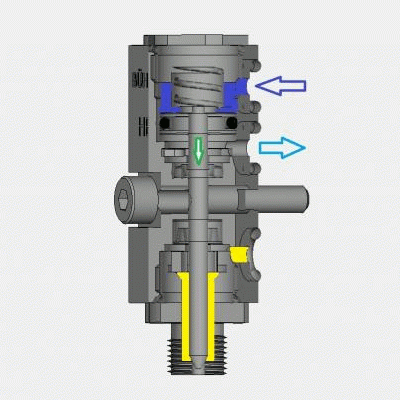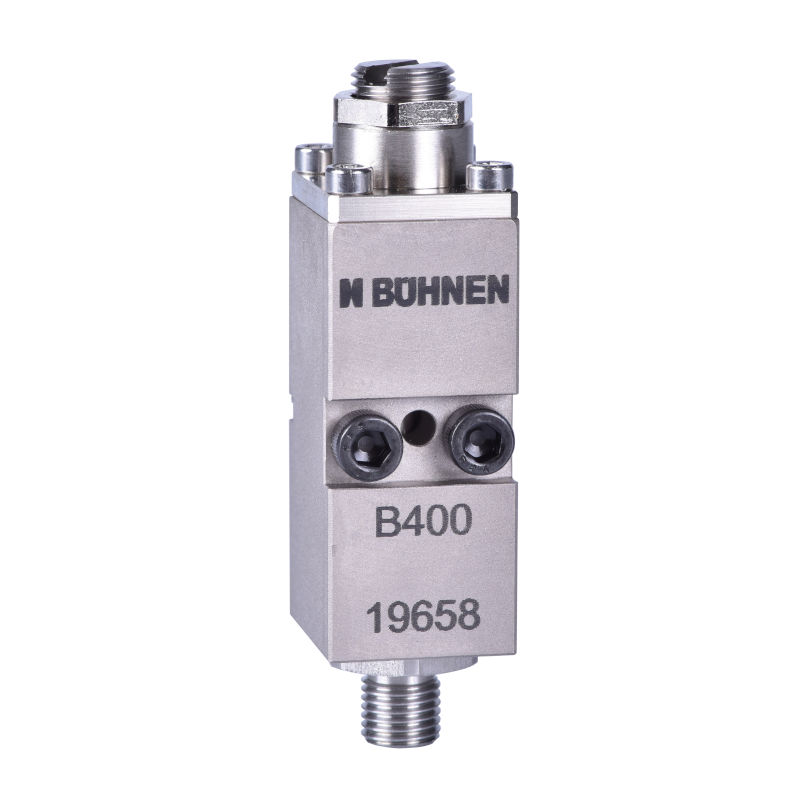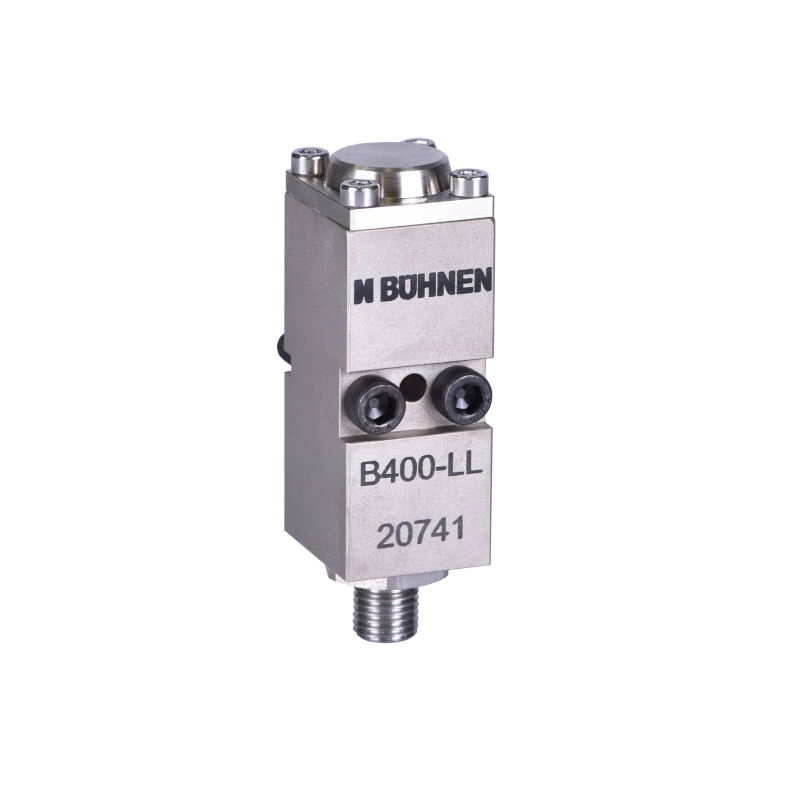Air or spring? How does a module work??

Hotmelts have become an indispensable part of many production processes. They are used to hold together everything from packaging to automotive components. But how is the adhesive applied precisely and evenly? This is where hot-melt adhesive heads come into play – where modules are installed that control the flow of adhesive.

How an adhesive module works
A module in a hot-melt adhesive application head (bead or spray) performs the function of regulating the hot-melt adhesive flow. These modules are screwed in front of the base body of the application head and are responsible for precisely controlling the adhesive flow. A suitable nozzle is then screwed onto the module.

The first main type of module we will look at is the air-opening / spring-closing module. In this type of module, the opening is by means of compressed air. When compressed air is supplied, the piston within the module moves to open the nozzle needle and allow adhesive to flow. This mechanism allows quick and precise release of adhesive once the compressed air is turned on.
As soon as the compressed air is switched off, a built-in spring ensures that the nozzle needle is automatically closed. This feature ensures a reliable seal and prevents adhesive leakage after the application process is completed. This is important to minimise contamination and to ensure a clean bond.

Air-opening / air-closing
The second type of module is the air-opening / air-closing module. In contrast to the air-opening / spring-closing module, the compressed air must be used for both opening and closing the module.
When compressed air is supplied, the piston moved to open the nozzle needle and allow adhesive to flow. To close the module, the compressed air is switched to move the piston in the opposite direction and close the nozzle needle.
In both versions, these modules provide precise control over hot-melt adhesive flow, which is crucial to applying the correct amount of adhesive to the substrate. The choice between the two types depends on the specific requirements of the application, but both variants ensure reliable control of the adhesive flow.
- Reactive hot melts – bonding in two stages - 23. April 2024
- The diversity of bead nozzles: A look at the precision in adhesive application - 16. April 2024
- „Take 5 / Action!“ – In the BÜHNEN recording studio - 9. April 2024